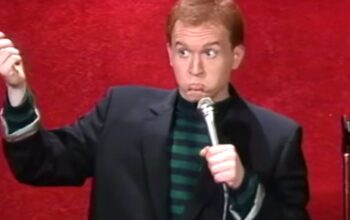The Creativity of Constraints
In 1985, after a string of critical and commercial flops, Disney Animation Studios was all but done for.
New CEO Michael Eisner and head of the Animation Studio Jeffrey Katzenberg saw the future in TV, video, and pay-cable markets, and placed more focus on their live action adult studio, Touchstone.
They saw the Animation Studio as a financial liability and seriously contemplated doing away with it altogether.
So they moved the studio from its plush lot in Burbank to a mishmash of warehouses, hangars, and trailers in Glendale.
What’s more, Katzenberg ratcheted up production, calling for a new film every year rather than the 3-4 years that the Studio had gotten accustomed to.
The team at the Animation Studio were distraught.
Not only had they lost the luxuries of their old studio, they were expected to put out much more content than they had been used to. Katzenberg wanted things fast and cheap, and the creative team feared they would get what they paid for.
The result surprised everyone, Eisner and Katzenberg perhaps most of all.
Under pressure from the execs, the studio’s Ron Clements and John Musker turned to a story idea that they had on the back burner since the early days of Disney, a fairy tale about a mermaid who longed to be a part of the human world.
The Little Mermaid went on to become the Animation Studio’s biggest success since 1967’s Jungle Book and ushered in what enthusiasts call Disney’s Renaissance Period.
—
We have the impression that artists need unlimited freedom to produce their best work and that constraints hinder output.
But Disney’s story shows the opposite to be true.
Instead of cranking our run-of-the-mill features to cover costs, the studio began to create some of the best movies that Disney has ever made.
After the Little Mermaid came the sequel The Rescuers Down Under. Then Beauty and the Beast, which gave Disney its first Best Picture nomination. Then came the blockbuster Aladdin, and then the absolute smash The Lion King, which won the Golden Globe for best musical and became the second-largest grossing film of all time behind Gone with The Wind.
Wheaton College professor Michael Drout used the example of Stephen King, whose writing was best when he was just getting started and had the most limitations placed on his work. “The more strictures you have on your form, the better writing you will produce,” Drought said.
I am reminded of advice I once received from a sommelier on training one’s palate for wine tasting: Drink the same wine—varietal, maker, even vintage—for an entire year. By limiting your exposure to one, you can master them all.
It was the principle behind Stephen King’s early writing and the principle behind one of the greatest strings of movies that Disney had ever produced.
As Leonardo da Vinci is quoted as saying, “Art lives from constraints and dies from freedom.”




